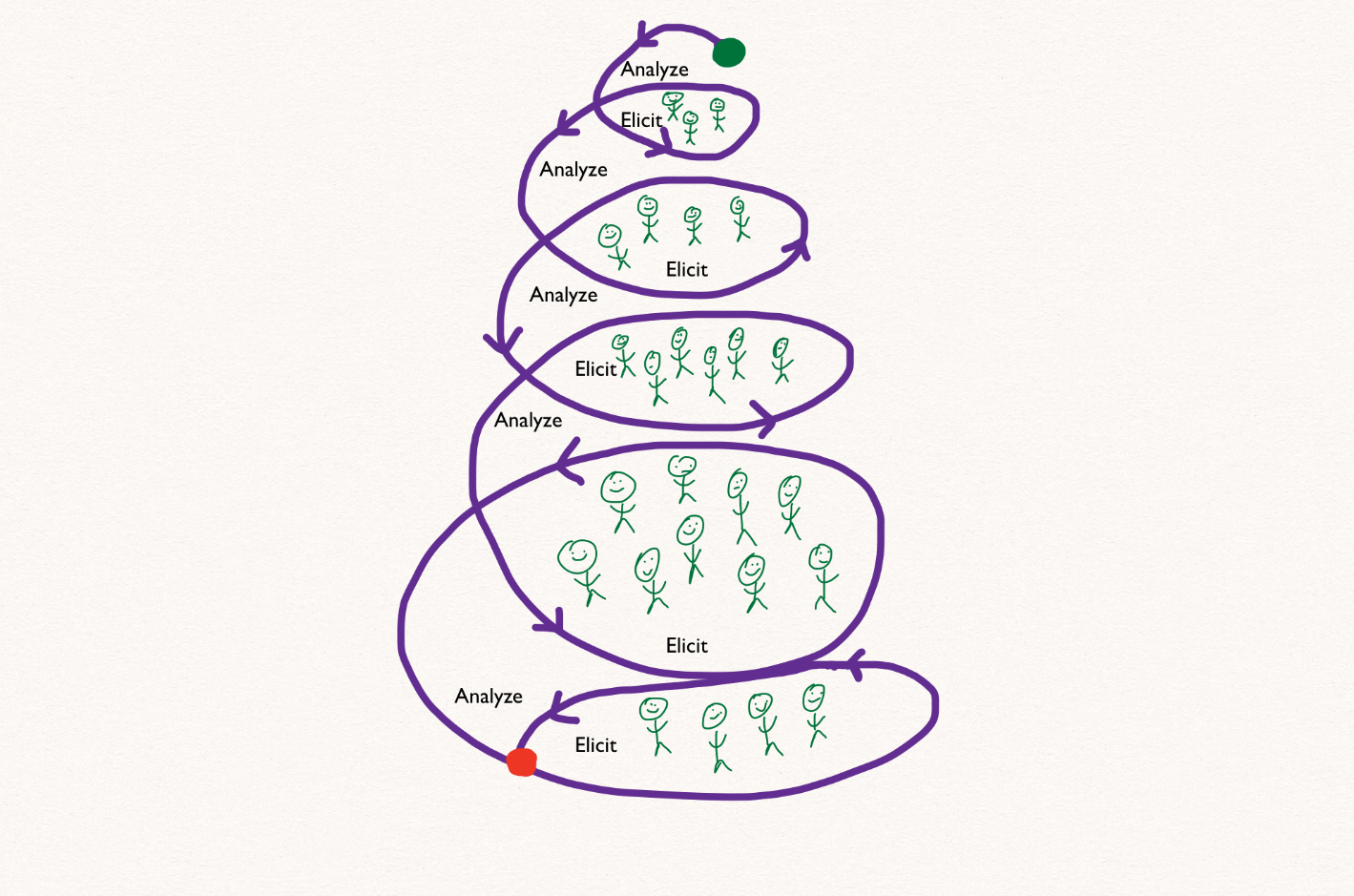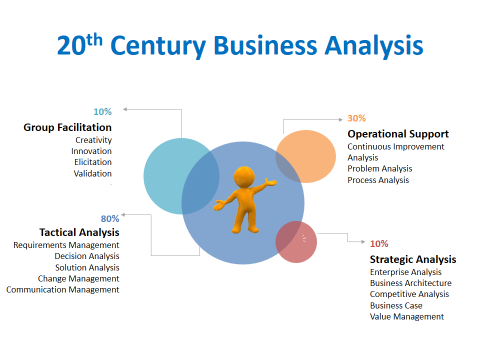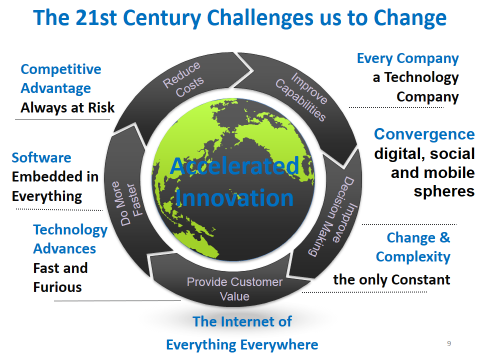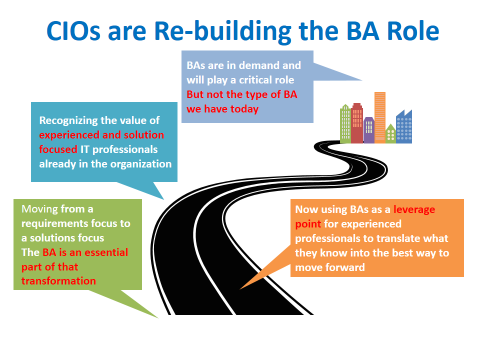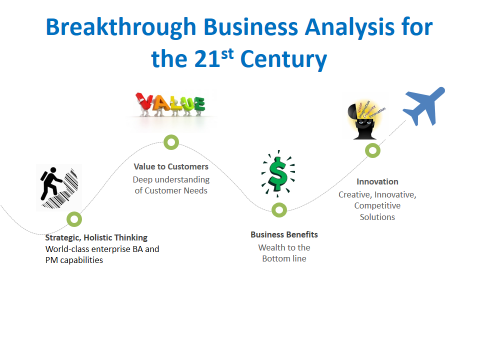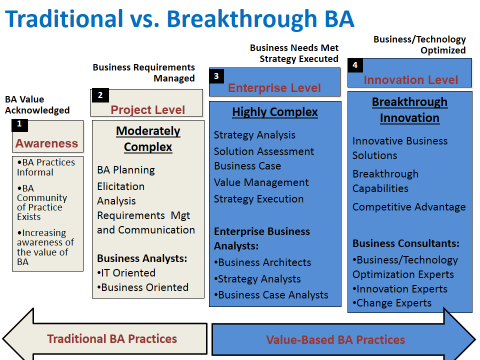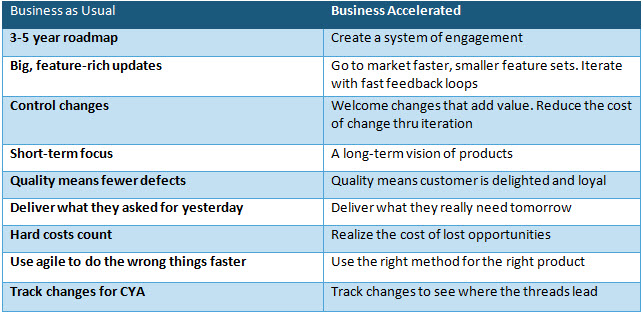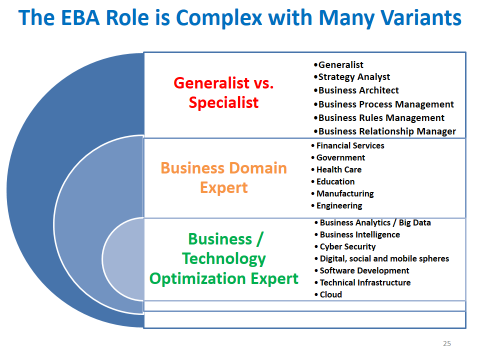The Transformational Enterprise Business Analyst
Why do we keep talking about the Enterprise Business Analyst (EBA)? Because it is quickly becoming the pivotal business/technology role of the future. The EBA is a business-driven strategic partner and integrator, an enabler of organizational change, and the driver of business success. As a strategic partner, the EBA often becomes an internal consultant – a business relationship manager at the top of the food chain of the BA profession.
Operating at the enterprise, strategic level, the EBA engages in radical collaboration, as the Stanford University Design School refers to it. The EBA understands that today’s complex projects demand an unprecedented amount of teamwork and cooperation among all key business and technology roles in a critical project. Indeed, shared project leadership is replacing old project management models. Perhaps the most valuable partnership when operating at the enterprise level is the one between the project manager and the business analyst.
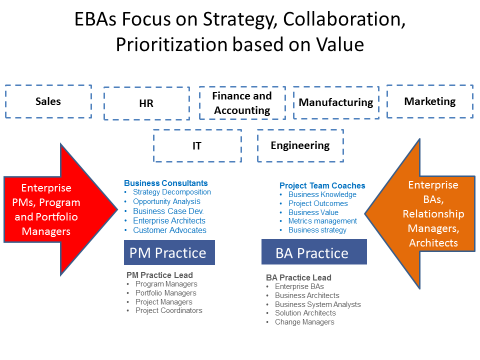
The BA and PM work together to ensure projects are launched to bring about innovative solutions, value to the customer, and wealth to the bottom line. All decisions are made with the customer in mind. Changes that add value are not only welcomed but sought after.
Related Article: The Future is Now: The 21st Century Enterprise Business Analyst
THE RISE OF THE ENTERPRISE BUSINESS ANALYST
The rise of the EBA marks a significant departure from business-as-usual business analysis. The EBA is a strategic asset to decompose strategy into valuable change initiatives. The EBA plugs the gap conducting the burden of analysis that is too often missing from business/technology project prioritization and selection.
EBAs work up front and personal, in support of an investment framework based on business value. The EBA performs the due diligence that is so often missing during project initiation. This due diligence includes competitive analysis, problem/opportunity analysis, experimentation, creative brainstorming, early complexity assessment, and captures the results in the form of a business case to propose a new change initiative.
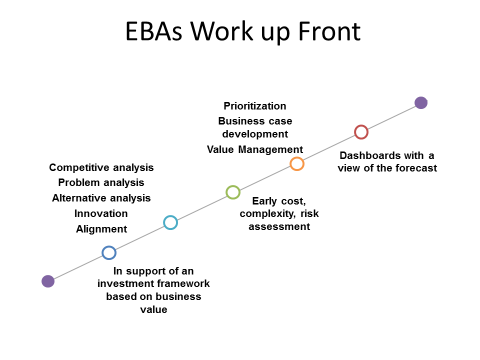
TRANSFORMATIONAL PRACTICES
The EBA employs transformational practices to bring about value-based decision making and project management practices.
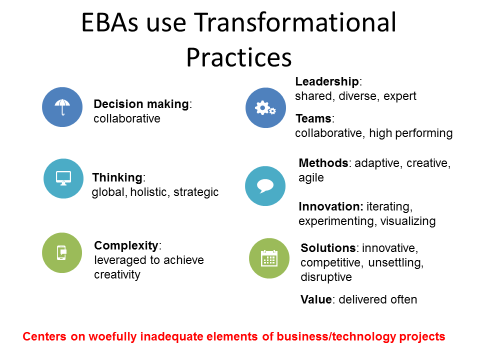
TRANSFORMATIONAL ROLES
The EBA fulfills many strategic roles, essentially putting a finger in the dike for many areas that have been woefully inadequate in organizations today, from business relationship manager to internal strategic consultant.
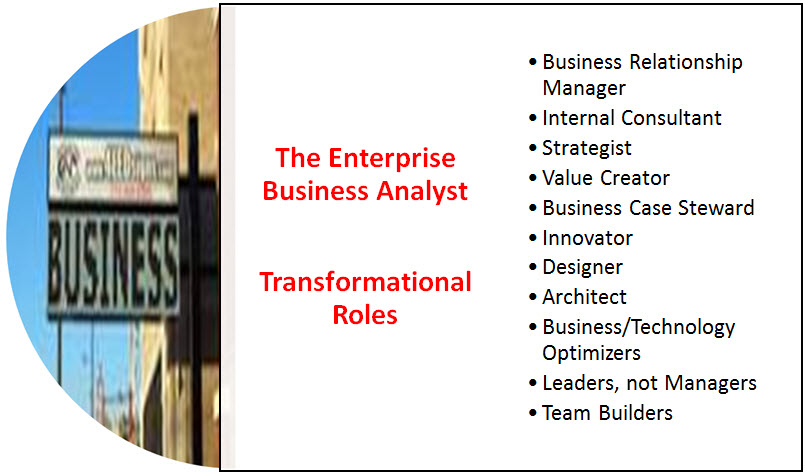
Business Relationship Manager and Internal Consultant
As business relationship manager, EBAs fully understand the needs of the business, from vision and strategy to execution of operations. EBAs build executive level relationships as well as relationships with lower level managers and practitioners. They decompose strategy into valuable projects and programs. They lead creativity sessions to ensure we conceive the most innovative solutions. They create business cases to propose new initiatives. They conduct competitive analysis to understand where their industry is headed. They coach project teams to ensure the teams understand the business need and the value expected from the initiative.
Strategist
The EBA often has a seat at the table with the executive management team, participating in strategy sessions, facilitating the management team through problem analysis, alternative analysis, and opportunity analysis.
Innovator, Designer, and Architect
The EBA understands that creativity is a skill that can be learned. Understanding and using design principles enable EBAs to lead sessions to design the transformation prior to examining alternative solutions. Using architectural techniques, the EBA makes the future visible through models and rich pictures.
Business/Technology Optimizer
World-class EBAs stay ahead of trends within business analysis, technology-enabled business practices, and in the industry of their choosing. However, staying up with trends is a difficult undertaking because of the amount of information that is out there; it is voluminous and can be overwhelming. The trick is to concentrate on keeping abreast of business and technology trends at a high level, and go deep in a just-in-time learning manner. That is educate yourself on areas of interest at the time when you need to apply them to your current endeavors.
The EBA thinks holistically about the business, the ecosystem surrounding the business, and about the technology supporting the business. The EBA understands where the industry is headed globally, and how that will impact their organization. In addition, effective EBAs understand the current technology infrastructure, and trends that are emerging. Some of the contemporary areas of focus include:
- Collaboration and productivity
- Customer & operations support
- Cyber Security
- Digital, wireless, and mobile spheres
- Software
- Open technology
- Internet of things
- Compute
- Networks
- Social media
Leader, not Manager
In performing all of these roles, the EBA becomes a value-driven strategic resource for the organization. The EBA has mature influence skills, collaborating with project managers and other key change agents. The EBA understands how to build and sustain high-performing teams. In a given week, the EBA might serve as:
- Strategy and Competitive Analyst
- Strategy Executor
- Value/Benefits Manager
- Creativity and Innovation Enabler
- Transformational Designer
- Cultural Change Manager
- Team Leader
Lead through Connections
The world is hyper-connected. EBAs leverage the collective intelligence that resides in the untapped knowledge of their network. EBAs can embrace the dynamic tension between creative disruption and operational efficiency. EBAs cultivate organizational creativity in an age of complexity.
TRANSFORMATIONAL PROJECT SUCCESS MODEL
The traditional measures of project success have been on time, cost, and scope. Even with advances in technology and the project management and business analysis professions, superior project performance remains elusive. The CHAOS Manifesto 2013 reveals that 61% of IT-enabled business projects continue to fail to meet project cost, schedule, and scope goals.
In the 21st century we need to achieve 90% of projects on time, cost and scope through smaller, incremental development of solutions. And at the same time, our focus needs to be on innovation and value. Companies that fail to innovate will get lost in the dust of agile, fast-moving competitors. So, our new project success model needs to look something like this:
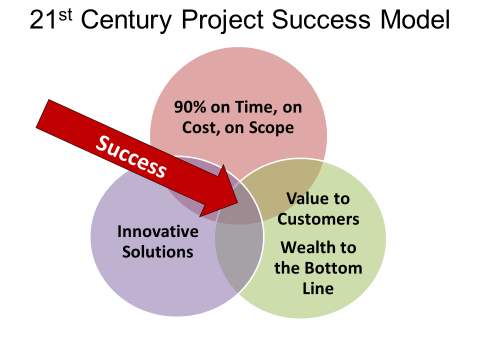
Clearly, the business analysis profession needs to step up to the plate to close the gap in project performance, and the EBA is emerging as that transformational role. EBAs are drastically changing the way we manage projects. EBAs adopt a more holistic view of change initiatives so that we:
- Focus on delivery of business value and innovation vs. requirements management,
- View change initiatives holistically, understanding that critical projects will likely impact the entire business ecosystem of people, process, organizations, rules, data, applications, and technology
- Embrace architecture and design to help temper complexity and uncertainty, and
- Strike a balance between analysis and intuition, order, and disruptive change.
Look for us at the Building Business Capability Conference in Las Vegas in November.
i Leading Through Connections, Insights from the 2012 IBM Global CEO Study (www.ibm.com/services/us/en/c-suite/ceostudy2012/
ii THE STANDISH GROUP, “CHAOS MANIFESTO: THINK BIG, ACT SMALL,” 2013. ONLINE AT versionone.com/assets/img/files/ChaosManifesto2013.pdf (accessed January 2014).


